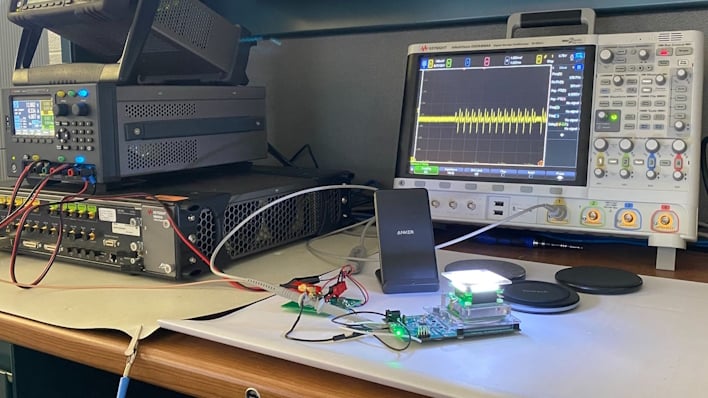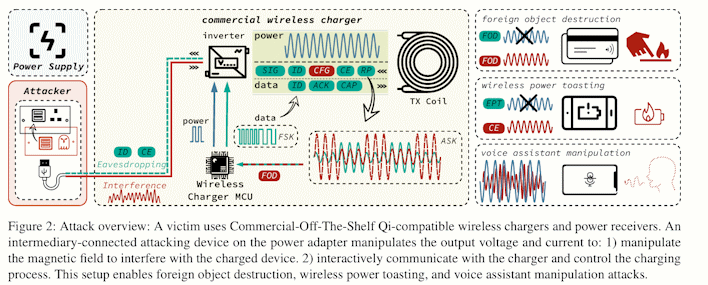Researchers Show Wireless Chargers Can Melt Phones, Blow Up Keys, Or Start Fires

A team of researchers from the University of Florida recently published a paper and accompanying website regarding VoltSchemer, which is described as a “set of innovative attacks that grant attackers control over commercial-off-the shelf wireless chargers.” According to the paper, the attacks are performed by tweaking the voltage output of the wireless charger's power supply, which ultimately creates electromagnetic interference. This interference can then be used to induce voice commands in the circuitry of smartphone voice assistants, or actually damage the device.
Charging pads like Qi chargers use a communication protocol that enables safe charging, so that the charging pad does not constantly send power when the device is charged. However, these communications can be manipulated so that the charging pad begins unsafely charging a device, which could damage or destroy it. The researchers ran this sort of attack against a Samsung Galaxy S8, finding that despite attempts to stop power transfer and a shutdown by the phone, the device reached a whopping 178°F.
In addition to smartphones, this type of attack could be used against other metal objects sitting on the pad that you would not normally charge. For example, some binder clips on the pad were heated to a whopping 536°F which is enough to light paper on fire. Further, a key fob was "charged" and the battery exploded, a USB drive effectively melted, and an SSD was overheated and suffered data loss, among other stuff that was melted and destroyed.
Despite these risks, we would not expect this to be a widespread threat. This attack requires an attacker to have control of the power supply, which requires physical access. However, this is a risk nonetheless, and as such, the researchers have communicated with wireless charging pad manufacturers to quash the problem in the future.



